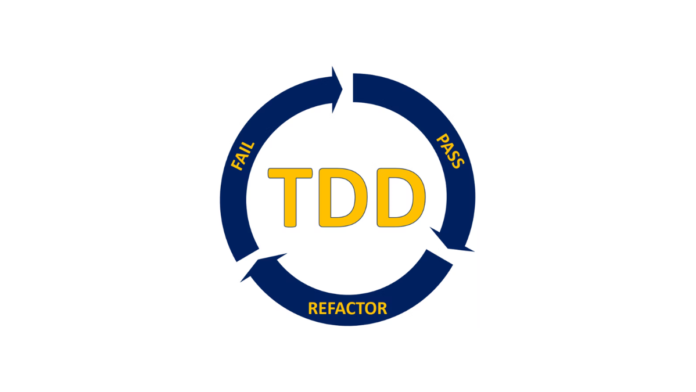What is TDD?
TDD, otherwise called Test-Driven Development, focuses on creating test cases before developing the actual code. This practice allows the code to be tested first, and only if a test fails; a new code will be written. This ensures an error-free code from the start, and hence the code shall not break in the long term.
TDD is a software development process. It starts by designing and developing tests for every small bit of functionality of the application. It emphasises production code rather than test case design.
TDD’s concept is simple. It helps you rectify the old code before developing the next new code. Once the existing written code is in place, the developer shall proceed to write the next set of code. Now that we got a brief on what is TDD, let’s understand its process.
Process of TDD
TDD is usually carried out in 3 steps:
- Creating the test cases: The developer creates unit test cases to verify the code’s functionality. Most people would say the test will fail, but that’s not true. Developers are writing tests that might fail. But this is to know how their assumptions will shake out before they get too far down the path.
- Rectifying the Code: When a test fails, developers need to make the minimal changes needed for it to pass successfully once re-run
- Refactoring: Once the code is up and running successfully, check if it can be optimised to enhance the overall performance
Benefits:
1. Quality of the Code:
TDD supports the development of simple, clean, and extendable code. While BDD helps to analyse the behaviour of the application,TDD tests functionality in isolation. As part of developers’ everyday practice, the discipline of following TDD would automatically establish habits that lead to better code. Developers become more focused on system needs by first questioning why a feature is required before moving forward with its implementation. As building a unit test for them becomes taxing, the developer might uncover poorly specified requirements through this method.
2. Application Quality:
Compared to the previous technique, building breakpoint tests before production code allows developers to spend more time designing the boundary cases that need to be covered by these tests. At the end of the development cycle, it results in more thorough testing and fewer bugs/defects.
3. Increased Test Coverage:
TDD benefits from higher test density and coverage by default. TDD enforces the discipline of associating all functionality with a set of automated unit tests. As a result, the code is subjected to more tests and larger test coverage.
4. Enhances the productivity of developers
TDD improves speed by reducing the number of time developers spend debugging. It may increase the time spent developing tests and production code during the early stages. However, implementing and testing new features will be easier as the project grows, requiring less rework. It’s much less expensive in terms of resources to solve the problem right away than waiting months for it to be detected.
Final Thoughts:
Test-driven development is a development technique that requires you to build a test that fails before writing new functional code. Agile software developers quickly adopt TDD for application source code development, while Agile DBAs adopt TDD for database development.
TDD should be viewed as an extension of Agile Model-Driven Development (AMDD), and the two may and should be utilised together. TDD is not a replacement for traditional testing; instead, it is a method for ensuring good unit testing. TDD has the side consequence of producing working examples for calling the code, resulting in a functional specification for the code.









